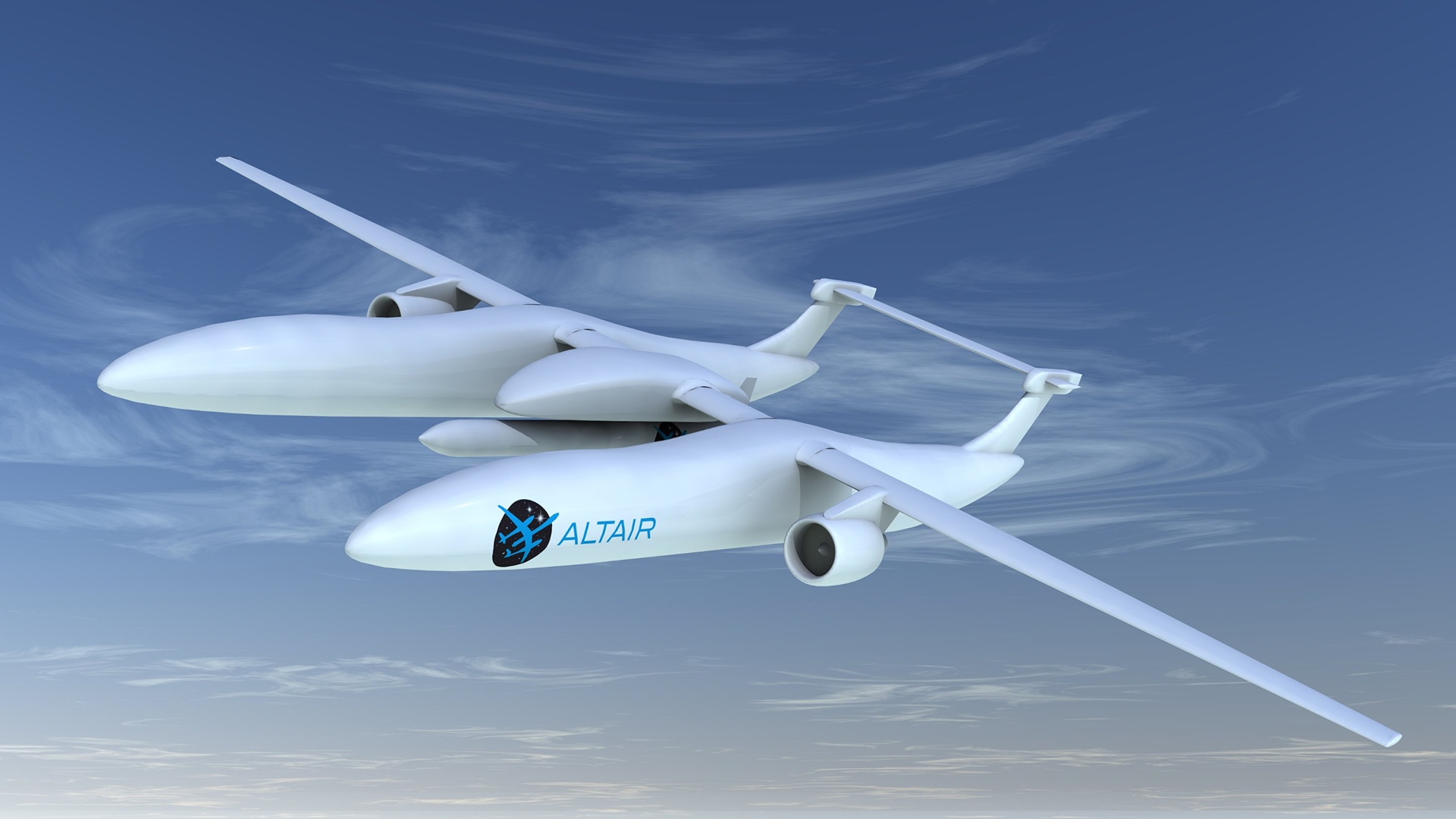- Sectors
- Aerospace & Defense
- Big science
- Biotechnology
- Fintech
- Work at ARQUIMEA
- Insights

The current trends in the satellite market are turning into the use of smaller and more efficient platforms. This, together with the growing number of Low-Earth Orbit (LEO) applications, including the many ongoing projects of satellite constellations is changing the landscape of the space ecosystem in general and especially affecting the launcher industry, where there is an increasing need to reduce the cost per launch.
ALTAIR’s strategic objective is to demonstrate the feasibility of a new cost effective and reliable space launch system for the access to LEO (400-1000 km) of small satellites. The ALTAIR project has received funding from the European Union’s Horizon 2020 research and innovation programme.
The ALTAIR launch system aims to answer to the needs of small satellites users, providing an affordable and adapted access to space service, without the constraints of current rideshare launch options. ALTAIR will boost space applications to the benefit of an increased spectrum of users, from classic satellite operators to academics and research centres.
ALTAIR is an innovative air-launch system using a reusable unmanned aircraft carrier optimised specifically for this mission. The expendable rocket launch vehicle, which is released at high altitude, associates green propellant hybrid propulsion, lightweight composite structure, innovative avionics and a versatile upper stage, providing mission flexibility. Cost-effective ground operations are obtained through innovative ground systems architecture.
COPYRIGHT: ONERA, the French Aerospace Lab
The ALTAIR concept needed a reliable solution to ensure the safe carry and proper release of the launcher. In order to better understand this technical issue, flight tests have been performed with the releasing of an experimental rocket from a flying demonstrator. For those flight experiments, an ARQUIMEA system was used as the main actuator of the release system placed between the demonstrator primary structure and the experimental launcher.
For the operational purpose of such experiments, it was required the ability of the Release System to be easily reused to repeat the operation as many times as possible.
ARQUIMEA implemented a solution based on the company’s HDRM, together with an electronic system for the controlled actuation of the devices. The system is formed by two REACT 5kN Standard Temperature units and the electronics for synchronized and near-simultaneous activation (<20ms).
ARQUIMEA’s REACT devices are low-shock Hold-Down & Release Mechanisms (HDRM) which function is to firmly fix a payload during transportation or launch and later release it by electrical activation. REACT implements a redundant trigger with two different motorization options based on Shape Memory Alloys, covering wide actuation temperature ranges and providing manual reset capability to the end user. Typical applications of REACT include solar arrays, antennas, booms and masts, reflectors, cover doors, scientific instruments, shutter mechanisms, large structures, launch locks for gimbals, thrusters, stage separation, caging mechanisms, etc.
The control electronic system (RECU) provides the status of the release and the arm/disarm operations of the HDRM. It transforms the release signal into two synchronized actuation signals for the two REACT devices. The RECU system is designed to grant the proper actuation within the defined time.
On September 7, 2019, at the CNES Guyana Space Center (CSG) in Kourou, the demonstrator EOLE successfully performed an automatic flight with the release of a small-scale mock-up of the ALTAIR rocket. This successful flight concluded the last EOLE experiment campaign, whose objective was to validate the full launcher release sequence and associated systems.
The control of the different parameters such as release time, temperature and initiation circuit measurements were successfully monitored by the Release System. It was capable to supervise during the flight the released/unreleased status of the device. The REACT field reset capability was a key factor to successfully meet the tight schedule of the test campaign. As ONERA points out, this campaign was “a success across the board, including automatic flights, culminating with a release of the launcher model, thus validating avionics technologies and the separation and release technique in automatic mode”.
ARQUIMEA’s REACT + RECU electronics for near-simultaneous release proved to be the optimal solution for the launcher system. The separation manoeuvre was not trivial, as it was a critical element of this type of airborne launch system.